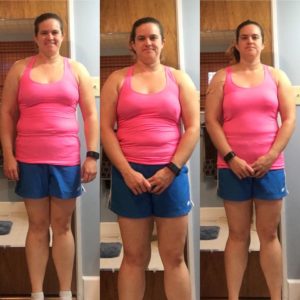Body-weight workout
Part1:
Squats should always be hip crease below knee squats, unless you’re dealing with pain in which case that often needs to be addressed separately. Lift your arms as you descend and push them down as you stand up to make the squats a whole body exercise and increase your speed. Windmills start at hips, not your spine. Keep your back flat and push your hips away as you reach to your toes. Aim for your shin or knees to scale intensity or if the flexibility just isn’t there yet. Sit up should be upright, not crunched.
Part 2:
Side planks can be supported from the forearm, or with the arm extended resting on your hand for more challenge to stability. Push up plank is from arms extended with shoulders slightly forward, don’t let your shoulders sag. Hold and stop with a little time left in reserve.
Dumbbell workout
Part 1:
Single arm overhead squats are a major challenge, which is a great way to improve your general squat mechanics. Go as light as necessary for control, while keeping your feet flat and the squat balanced. Don’t get on your toes. Alternating db powersnatches should be a short catch, powerful drive, and a quick lockout. aKeep your back flat, and use your legs! Sit ups should be upright, not crunched.
Part 2:
Turkish get-ups, one of my favorites. If you’re not actively trying to become good at turkish get-ups, you’re missing a great opportunity to improve shoulder function, midline stabilization as well and strengthening your hips and glutes. You should hate turkish get-ups, they’re hard, but you should still try to get better at them. Start light, and try to go straight into the second rep even as the weight increases.
Barbell workout
Part 1:
Bye bye traps. Alternating between overhead squats and sumo deadlift high pull may not make your neck disappear but it will make you acutely aware of your traps and shoulders as they smolder through this workout. Work smooth, breath, and don’t death grip the bar (don’t wet noodle grip it either). Don’t let the bar move forward or both movements get harder. Sit up should be upright, not crunched.
Part 2:
Turkish get-ups, one of my favorites. If you’re not actively trying to become good at turkish get-ups, you’re missing a great opportunity to improve shoulder function, midline stabilization as well and strengthening your hips and glutes. You should hate turkish get-ups, they’re hard, but you should still try to become great at them. Start light, and try to go straight into the second rep even as the weight increases.



